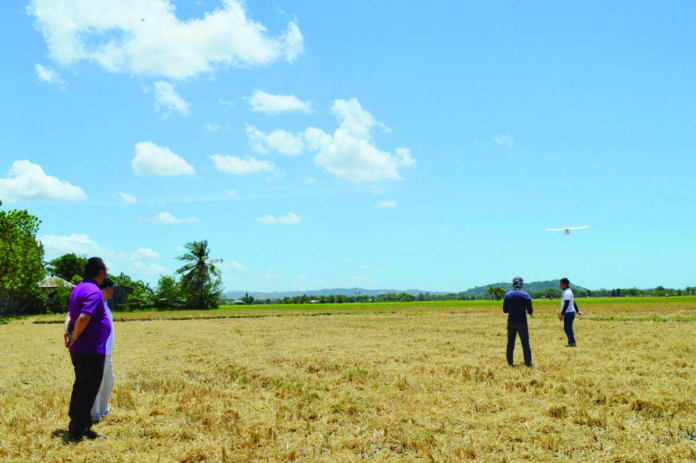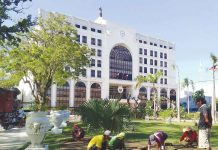
ILOILO – The El Niño phenomenon continues to wreak havoc on the commodities of the province, with the latest data showing damages amounting to P1,025,662,858.10.
According to the April 26 progress report from the Provincial Agricultural Office (PAgrO), the agriculture industry has been severely hit, affecting rice, corn, high-value crops, fisheries, and livestock and poultry.
The damage across different agricultural sectors is as follows:
* rice – P653,105,869.47
* corn – P219,192,304.59
* high-value crops – P136,606,261.04
* fisheries – P16,561,871
* livestock and poultry – P196,552
The PAgrO report also highlights that a total of 88,764 farmers and fisherfolks have been affected. Specifically, 12,590 rice farmers, 3,901 corn farmers, 71,978 high-value crop farmers, 295 fisherfolks, and 51 farms involved in livestock and poultry have suffered losses.
In terms of geographical impact, 24 towns reported damage to their rice fields, 20 to their corn fields, 17 reported damage to high-value crops, five to fisheries, and two reported impacts on livestock and poultry.
The five towns with the highest damage to rice are Barotac Nuevo (P144,116,136), Dumangas (P138,800,328), Anilao (P52,223,800), Banate (P43,710,172), and Cabatuan (P43,641,524).
The situation is now being evaluated by the Provincial Disaster Risk Reduction and Management Council (PDRRMC), headed by Gov. Arthur Defensor Jr., to consider declaring a state of calamity across the province.
Cornelio Salinas, head of the Provincial Disaster Risk Reduction and Management Office (PDRRMO), said the decision would depend on the extent of crop damage, the degree of affected population, and the availability of critical infrastructure.
A key meeting of the PDRRMC, chaired by Defensor, is scheduled for Monday, April 29, to discuss the impacts of El Niño and possibly pass a resolution recommending a province-wide state of calamity.
The criteria for such a declaration include significant damage to agriculture, affected population, and towns experiencing water scarcity.
Currently, three towns — Sara, Estancia, and Bingawan — have declared a state of calamity.
Under the guidelines of Memorandum Order No. 60 from the National Disaster Risk Reduction and Management Council, a declaration of a state of calamity can be made if at least 15 percent of the anticipated affected population requires emergency assistance, or if 30 percent of livelihood sources are impacted, among other stringent conditions.
Here are the towns that reported damage:
* rice fields – Tigbauan, Oton, Tubungan, Anilao, San Enrique, Cabatuan, Barotac Nuevo, Miag-ao, Mina, Dingle, Dumangas, Igbaras, Banate, Zarraga, San Miguel, Carles, Leon, Barotac Viejo, Sara, San Rafael, Janiuay, Balasan, Batad, and Estancia
* corn fields – San Enrique, Barotac Viejo, Barotac Nuevo, Dingle, Concepcion, Estancia, Oton, Maasin, Batad, Lemery, Sara, Calinog, San Rafael, Igbaras, Balasan, Dueñas, San Dionisio, Guimbal, Lambunao, and Janiuay
* high-value crops – Igbaras, San Miguel, Tubungan, Oton, Zarraga, Dumangas, Estancia, Leganes, Alimodian, Anilao, Cabatuan, Leon, Dueñas, Barotac Nuevo, Lemery, Dingle, and Guimbal
* fisheries – Barotac Nuevo, Carles, Dumangas, Banate, and New Lucena
* livestock and poultry – Batad and Zarraga
The five towns with the highest damage to high value crops are Leon (P51,588,009), Dueñas (P28,687,107), Igbaras (P13,414,691), Alimodian (P12,889,250), and Barotac Nuevo (P10,250,900).
On the other hand, the top five towns with the biggest corn losses are Sara (P79,096,950), Barotac Viejo (P47,516,602), Batad (P29,536,650), San Dionisio (P20,724,660), and Balasan (P8,367,705).
In fishers, the following incurred the most damage are Dumangas (P6,078,880), Barotac Nuevo (P2,273,660), New Lucena (P893,220), Banate (P641,195), and Carles (P181,975)./PN



